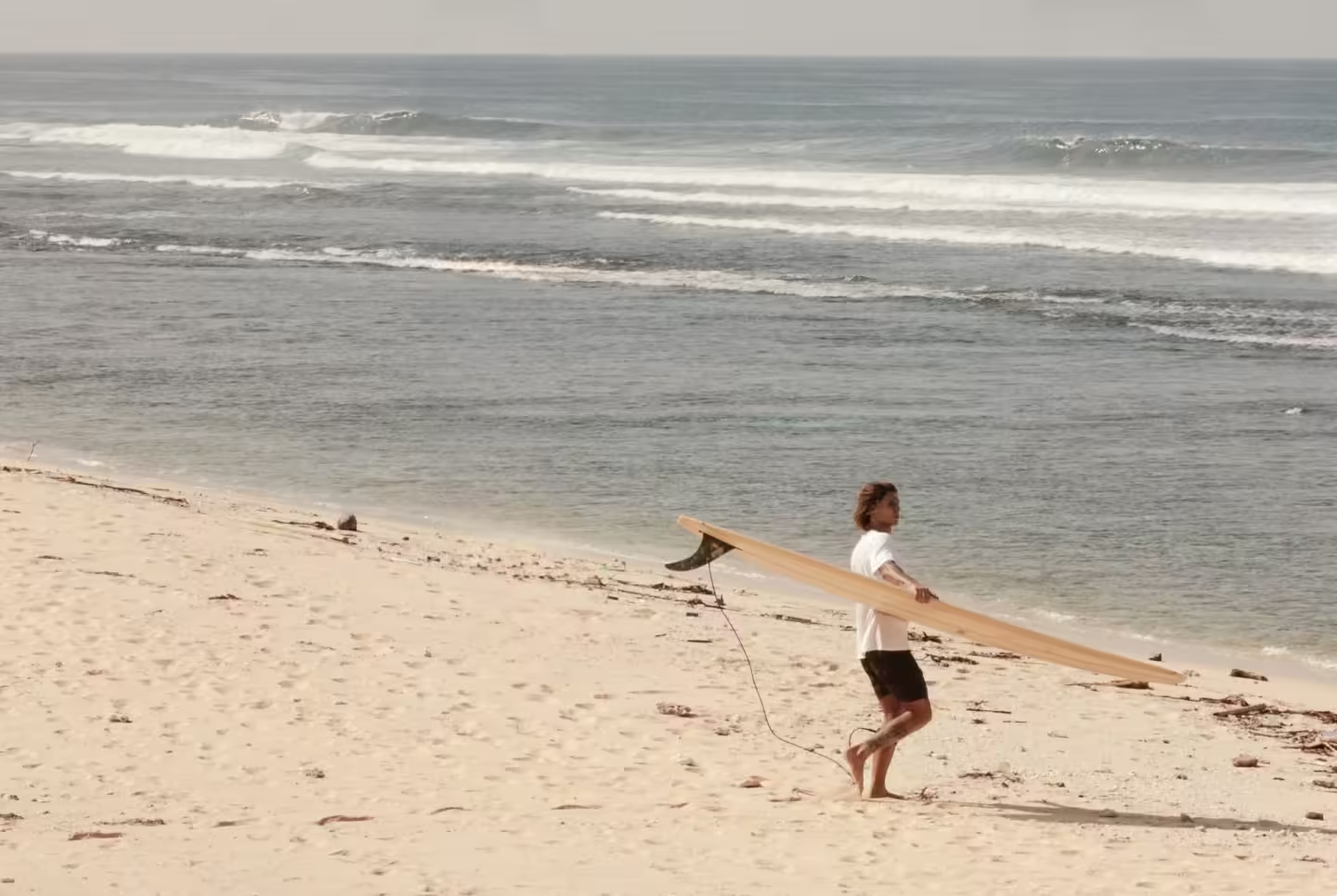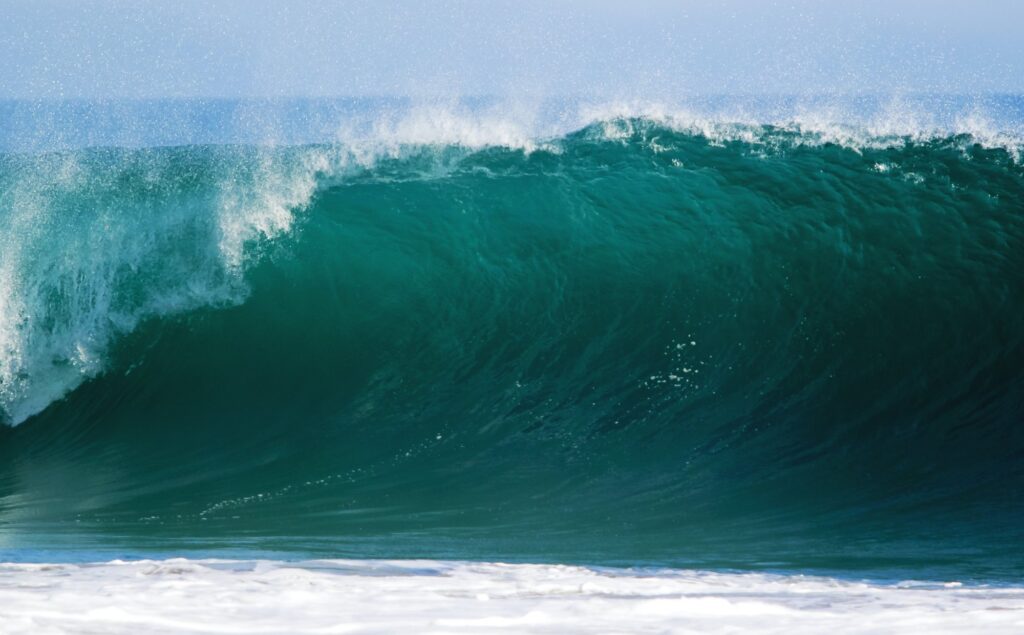How Do Surfers Measure Wave Height?
The thrill of catching that perfect wave and magically gliding across its face is incomparable to any other experience.
It’s a no-brainer that the larger the wave, the harder and riskier it gets, and the more skill it requires.
But how do you know if a wave is just right for your skill level? How do surfers measure wave height?
When it comes to surfing, one of the most important things to know is how to measure wave height.
Not only will this knowledge help you stay safe in the water, but it can also help you determine which waves are good for surfing.
So, leave your tape measures and rulers at home, they are not that efficient here anyway, because we’re talking about barrels, towering peaks, and heart-pumping rides.
Well, also small rides, just so you know. We shall start measuring, but first, we should start with the basics:
What Causes Waves?
Waves along coastlines can be attributed to distant storms, rather than those close by, and surfers typically prefer waves generated by far-off storms as they tend to be more consistent and smooth.
These long-distance waves are created by large-scale weather systems such as hurricanes, cyclones, and polar lows.
These storms produce strong winds that travel over vast areas of the ocean, creating waves that can travel thousands of miles.
The creation and formation of these waves are influenced by three key factors:
- The first is fetch, which refers to the area over which the winds are blowing.
- The second factor is velocity, which is the speed of the wind.
- The third and final factor is the duration or the amount of time the wind is blowing over the ocean.
When winds blow over a large area for an extended period of time, it causes the water to ripple, similar to when you drop a rock into still water. This ripple effect starts to build and grow, eventually creating a swell.
The combination of fetch, velocity, and duration determines the size and strength of the swell, and ultimately, the type of wave that will form.
This is why surfers prefer waves created by far-off storms, as these storms typically produce consistent and well-formed waves.
How to Measure Waves In Surfing
The measurement of wave height is a crucial aspect for surfers and ocean enthusiasts alike.
There are two popular methods for measuring wave height – the face scale and the Hawaiian scale.
The face scale is the most widely used method in the surfing community and in scientific circles.
It measures the wave height from the lowest point, known as the trough, to the highest point, called the crest, vertically.
On the other hand, the Hawaiian scale, adopted by surfers in Hawaii, assesses wave height based on the back of the wave.
Although it is viewed as less accurate compared to the face scale, it gives surfers a more practical viewpoint.
Waves Measurement
The conversion between the face scale to the Hawaiian scale remains a controversial issue, with differing opinions among experts. Some believe the Hawaiian scale is about half to two-thirds of the face scale measurement.
Regardless of the method used, wave height measurement plays a crucial role in surf forecasting and ocean safety.
Understanding the size and strength of waves is crucial for surfers to determine the best conditions for surfing and to stay safe while enjoying their sport.
Many factors can skew the conversion between these two, with social distortion and perception being the most significant.
For instance, some surfers tend to exaggerate the wave size, while others downplay it. The reason for this is uncertain, but some speculate it is to make big wave surfing appear easy.
Meanwhile, many individuals have a limited understanding of wave size and randomly assign a value.
Other variables that impact the conversion between face and Hawaiian scales include the size of the swell, the location of the surf break, measurement techniques, local winds, tides, and currents.
Many surfers use a straightforward method of expressing wave height by comparing it to the human body.
Instead of using numerical values, terms like flat, knee-high, waist-high, shoulder-high, head-high, overhead, double overhead, and triple overhead are employed.
However, not everyone is satisfied with this method as some argue that wave size is dependent on the height of the surfer.
How Surfers Anticipate Sets of Waves?
Waves come in sets, with breaks in between where there are no breaking waves. A swell results in larger and more consistent sets of waves.
On days with weak swell and small waves, sets may be as far apart as 10 minutes or more. A single set can comprise only one or two surfable waves, while a good set may include more than 10.
To maximize your chances, wait for a few waves to pass and let other surfers go, then time your wave.
Waves Sizes
So we already know that waves come in different sizes and shapes, but as you’re on your way to surf today, you want to get a better understanding of what some apps mean when they say the height is 2ft, 3ft, or 8ft.
Here is an overview of each one:
1-2 feet
These are small waves that are ideal for beginners and those looking for some easy fun without any serious commitment.
3-4 feet
Maybe the sweet spot in terms of wave height. These waves offer great rides and plenty of challenges without being too intimidating or dangerous.
5-6 feet
Bigger than the average waves, these still offer plenty of opportunities for an exciting ride but require a bit more skill and experience to maneuver safely.
7-8 feet
These are considered “expert only” waves and should be avoided by anyone who isn’t prepared to handle them. Even experienced surfers should be careful when tackling the size of these waves since they can easily become dangerous if mishandled.
9-10 feet
Massive waves require both advanced skill levels and specialized gear to tackle safely. Only professional surfers will attempt these kinds of waves. No-go for most surfers.
Conclusion
Surfers use different methods to measure and anticipate waves, but the most important thing is that they understand how each wave size works.
From flat waters perfect for beginners to massive 10-foot waves reserved only for professionals, surfers should always be aware of what size wave they are attempting so that they can stay safe while enjoying their ride.
Experienced or not, knowledge about wave sizes will give you an advantage when it comes to choosing which ones you want to take on, and when you want to go for a session again.



